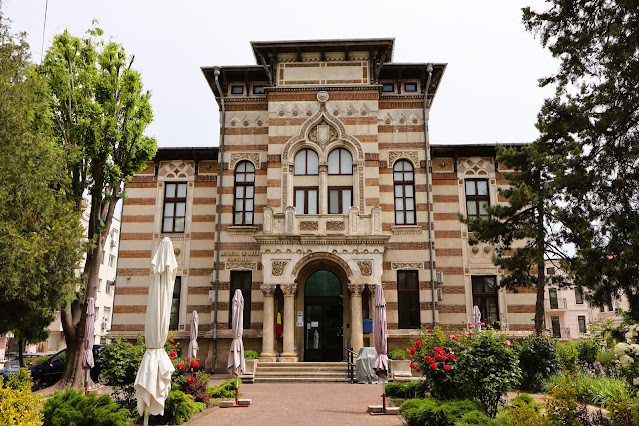Constanta (pronounced Constanza) is Romania's largest seaport and the fourth largest city in Romania.
In the photo below, you can see the heavy mist and fog that hangs over the Black Sea.
On the west coast of the Black Sea, this 2,600-year-old city has been inhabited by Greeks, Romans and Turks. It was built on the site of the ancient Greek city of Tomis (600 BC) and named after the Roman emperor Constantine I.
After an early dinner overlooking the seaside, a random walk leads us to a park on a different stretch of the Black Sea and, while walking the promenade discover an old church.
The next day, a taxi takes us to the ten-kilometre-long seaside promenade. With only one day and so much to see, we walk only a small portion of the promenade.
Along the promenade, this Genoese lighthouse (built in 1861) is an iconic monument built on the location of an ancient Genovese lighthouse. It ceased service in 1913, when a modern one was built in the commercial harbour.
Next is a climb up many stairs to Old Town, perched on a cliff, which originally served defensive purposes. It feels like a walk through history as the influences of the various cultures here are still evident, while enjoying a view of the Black Sea.
Evidence of the Romans ingenuity in city planning remains visible today.

The beautiful space above is Ovid Square, named after the Roman poet Ovid who was exiled for life to ancient Tomis by the Emperor Augustus. His 'crimes' are vague but hint of the publication of erotic poetry, or perhaps some other social scandal of the day.
The story goes that right after the renovation to the building below it was 'tagged' with spray paint and meaningless words or letters. Throughout Europe, we have seen this vandalism of buildings, old and new, plain or beautiful.
Miscellaneous photos from the promenade and Old Town
Our taxi driver told us that a stunning casino perched on a rock at the seaside, where the rich and famous used to come to gamble, is open to the public (for just five days) after years of serving as a hospital during the wars, then being abandoned, and finally brought back to its former glory via a five-year, 39.5 million Euro renovation that honours the original Art Nouveau style.
Constanta is celebrating a birthday and has opened the casino for five days (no charge) to showcase it to its citizens. Locals are eager to see their treasure, and the admission line-up is long. The ninety minutes in line pass easily enough in conversation with a man, born here, now living in the USA, but who returns to his seaside apartments every year for several months.
The inside is as stunning as the outside.
We ask what the building will be used for in the future, and no one seems to really know. Guesses include: as a tourist attraction with paid admission, as a concert hall or for special events, either private or public.





































No comments:
Post a Comment